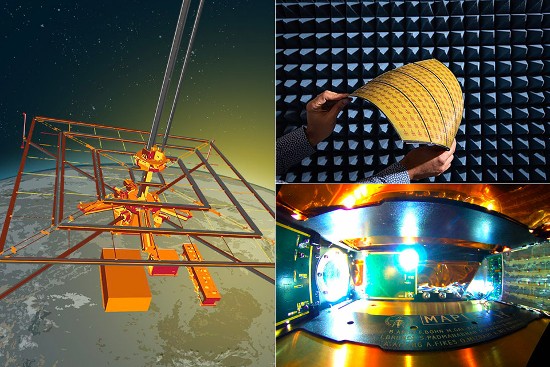In January of this year, I wrote about Caltech’s Space Solar Power Demonstrator (SSPD) Project and the successful launch of a satellite called Momentus Vigoride with an onboard microwave array that goes by the name, MAPLE.
MAPLE is an acronym for the Microwave Array for Power-transfer Low-orbit Experiment which consists of microwave power transmitters designed to transmit energy from the satellite to space-based receivers. The initial tests monitored from Earth show that the technology works. The end game is to demonstrate that the technology can transmit energy collected onboard and send it to Earth-based ground-station receivers.
How does MAPLE work? It contains no moving parts and uses timing control to transmit direct current electricity by using electromagnetic waves. Stated Ali Hajimiri, the Caltech team lead, “To the best of our knowledge, no one has ever demonstrated wireless energy transfer in space even with expensive rigid structures. We are doing it with flexible lightweight structures and with our own integrated circuits. This is a first.”
As the test continues the Caltech team will be assessing the design of the power transmission antennas grouped in clusters of 16 with each controlled by custom integrated circuit chips. It will be six months before testing is complete with the knowledge gained to be used in the building of the next-generation array.
Any solar panel located in space has enormous advantages over the ones we have here on Earth. They can be located so that they never are inside Earth’s shadow. That means 24 hours of continuous sunlight. They never have to deal with seasonality, cloud cover, and other atmospheric conditions that could reduce the energy yield.
Besides the normal challenges that any solar-powered satellite faces in space from space debris, space dust, asteroids, and extreme solar radiation, the biggest challenge is the public misperception of microwave beam transmissions. If a bird flies through the beam will it become toast? What about a beam intercepting an airplane? Could a solar-power-generating satellite be turned into a beam weapon like those portrayed in 007 films?
There are size issues as well. The European Space Agency (ESA) in its research into beaming energy from space by microwave describes the need for solar arrays multiple times larger than the International Space Station (ISS), the largest human-built object in space today. ISS took more than a decade to build at a cost of US $150 billion. ESA believes to get the equivalent energy produced by an average nuclear power plant would require an array ten times the size of the ISS.
Hajimiri and his Caltech team may have a different view from the engineers at ESA. The design they are working with will use lightweight, cheap and flexible structures delivered to orbit that unfurl into arrays 50 metres square from a 1 cubic metre (35 cubic feet) package. He sees wireless energy transfer from space to be as revolutionary as the Internet.
“No energy transmission infrastructure will be needed on the ground to receive this power,” states Hajimiri. “That means we can send energy to remote regions and areas devastated by war or natural disaster.”
The description sounds similar to SpaceX’s constellation of Starlink telecommunications satellites and how they have enabled Ukraine to continue to offer its citizens connectivity even in the face of Russia’s onslaught. In this case, however, instead of data and voice transmissions from Earth to space and back, a space solar power constellation will send energy to receivers to power anything on Earth. Hajimiri calls it the democratization of energy.










[…] solutions are already being tested. Back in August 2023 a posting on this site described the results from a Caltech-deployed satellite using a microwave array to demonstrate how solar energy collected in space could be converted to […]